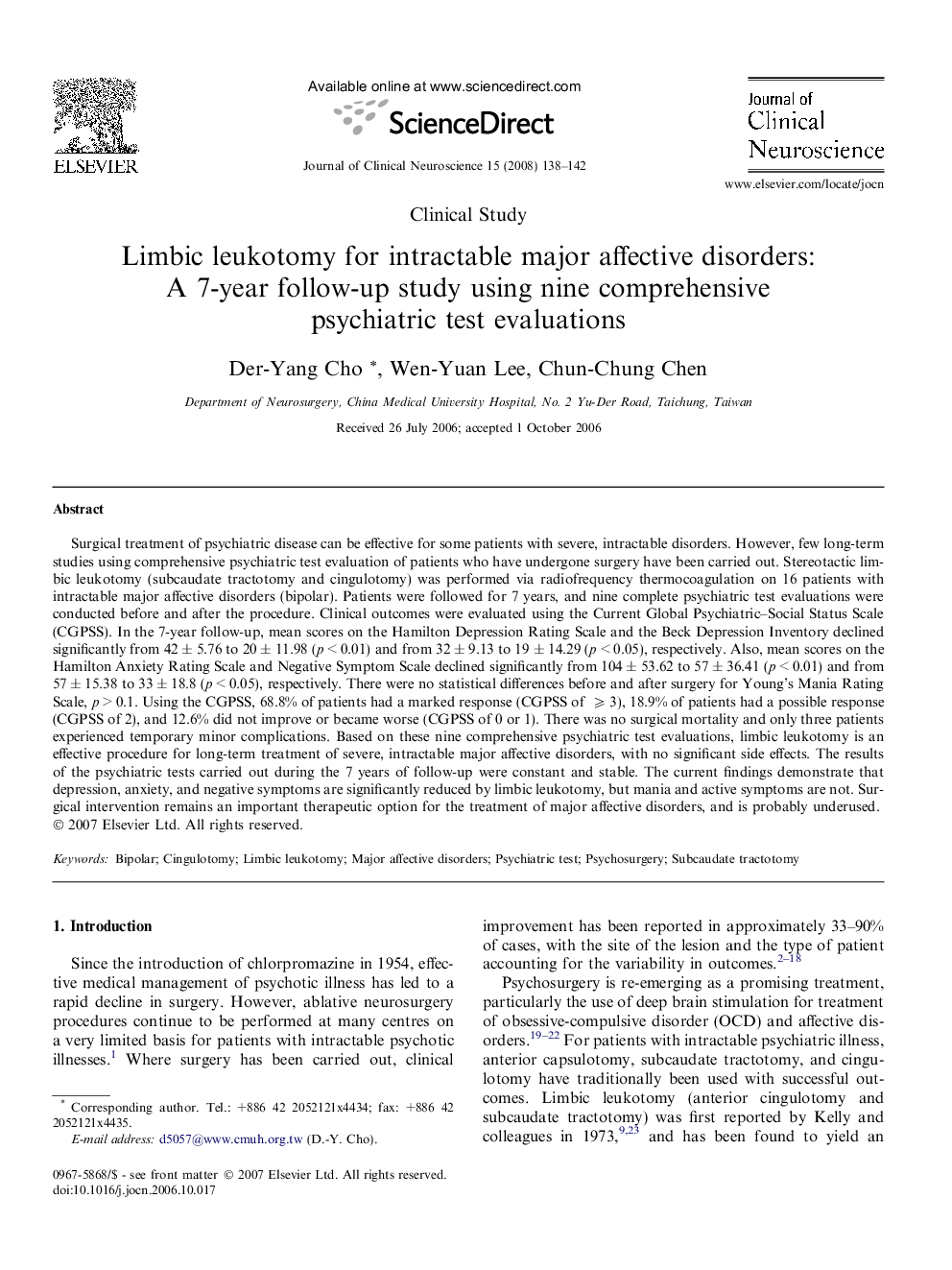| کد مقاله | کد نشریه | سال انتشار | مقاله انگلیسی | نسخه تمام متن |
|---|---|---|---|---|
| 3063615 | 1187524 | 2008 | 5 صفحه PDF | دانلود رایگان |

Surgical treatment of psychiatric disease can be effective for some patients with severe, intractable disorders. However, few long-term studies using comprehensive psychiatric test evaluation of patients who have undergone surgery have been carried out. Stereotactic limbic leukotomy (subcaudate tractotomy and cingulotomy) was performed via radiofrequency thermocoagulation on 16 patients with intractable major affective disorders (bipolar). Patients were followed for 7 years, and nine complete psychiatric test evaluations were conducted before and after the procedure. Clinical outcomes were evaluated using the Current Global Psychiatric–Social Status Scale (CGPSS). In the 7-year follow-up, mean scores on the Hamilton Depression Rating Scale and the Beck Depression Inventory declined significantly from 42 ± 5.76 to 20 ± 11.98 (p < 0.01) and from 32 ± 9.13 to 19 ± 14.29 (p < 0.05), respectively. Also, mean scores on the Hamilton Anxiety Rating Scale and Negative Symptom Scale declined significantly from 104 ± 53.62 to 57 ± 36.41 (p < 0.01) and from 57 ± 15.38 to 33 ± 18.8 (p < 0.05), respectively. There were no statistical differences before and after surgery for Young’s Mania Rating Scale, p > 0.1. Using the CGPSS, 68.8% of patients had a marked response (CGPSS of ⩾ 3), 18.9% of patients had a possible response (CGPSS of 2), and 12.6% did not improve or became worse (CGPSS of 0 or 1). There was no surgical mortality and only three patients experienced temporary minor complications. Based on these nine comprehensive psychiatric test evaluations, limbic leukotomy is an effective procedure for long-term treatment of severe, intractable major affective disorders, with no significant side effects. The results of the psychiatric tests carried out during the 7 years of follow-up were constant and stable. The current findings demonstrate that depression, anxiety, and negative symptoms are significantly reduced by limbic leukotomy, but mania and active symptoms are not. Surgical intervention remains an important therapeutic option for the treatment of major affective disorders, and is probably underused.
Journal: Journal of Clinical Neuroscience - Volume 15, Issue 2, February 2008, Pages 138–142